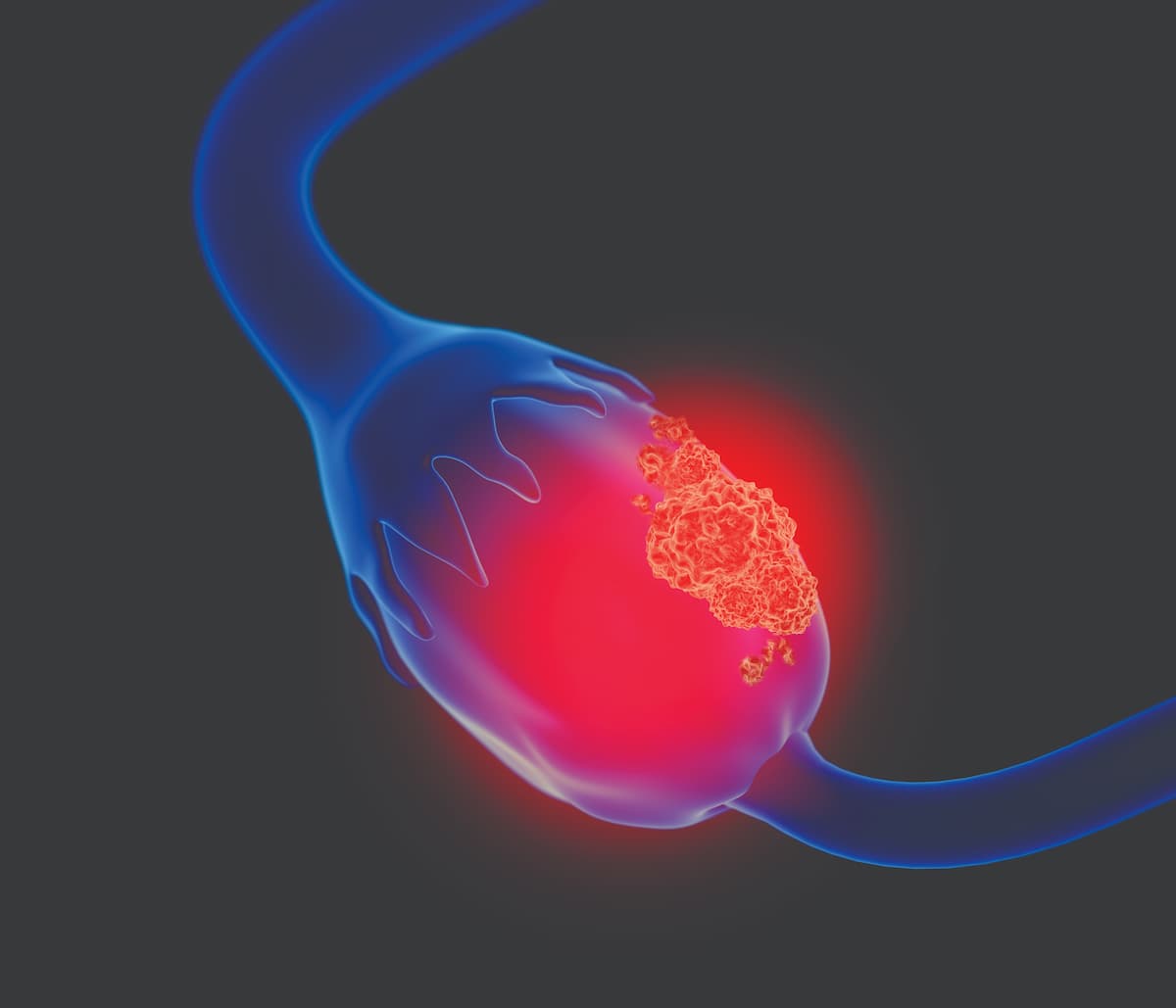Olaparib May Prolong PFS Regardless of Mutation Location in Ovarian Cancer
Maintenance olaparib plus bevacizumab may improve survival in patients with high-grade ovarian cancer regardless of BRCA mutation location, according to a subgroup analysis of the PAOLA-1/ENGOT-ov25 trial.
The addition of maintenance olaparib (Lynparza) to bevacizumab (Avastin) appeared to elicit better progression-free survival (PFS) in patients with BRCA-mutant high-grade ovarian cancer, with particular benefit observed in those with mutations located in the DNA-binding domain (DBD) of BRCA1/2, according to findings from an exploratory subgroup analysis of the phase 3 PAOLA-1/ENGOT-ov25 trial (NCT02477644).
Investigators of the phase 3 PAOLA-1 trial stated that "all women with BRCA1/BRCA2 mutations" in ovarian cancer may "derive benefit from maintenance therapy with olaparib and bevacizumab."

No difference in efficacy was observed between treatment arms based on which genes were mutated (HR, 0.22; 95% CI, 0.09-0.54; P = .64).
At a median follow-up of 25.5 months, those with BRCA1 mutations located in the DBD who were treated with olaparib and bevacizumab experienced an estimated 24-month PFS rate of 89% vs 15% among those treated with placebo plus bevacizumab (HR 0.08; 95% CI, 0.02-0.28; interaction P = .03). In patients with BRCA2-mutated disease, the 24-month PFS rates for those with mutations located in the DBD were 90% and 100% among those treated with olaparib and placebo, respectively.
Investigators did not observe differences in efficacy according to which gene was mutated (interaction P = .64).
“Ovarian cancer is a unique model to explore the predictive value of BRCA genotypes for response to platinum salts and [PARP inhibition],” the investigators wrote. “In this post hoc subgroup analysis of the PAOLA-1 trial, we found that all women with BRCA1/BRCA2 mutations derive benefit from maintenance therapy with olaparib and bevacizumab, regardless of location of mutations in both genes, but with different degrees of magnitude.”
The subgroup analysis examined 235 patients harboring BRCA1 or BRCA2 mutations of 806 who were assessed in the PAOLA-1 trial. A total of 233 patients were included in the analysis. BRCA1 and BRCA2 mutations were observed in 68.2% (n = 159) and 31.8% (n = 74) of patients, respectively. Moreover, 52.8% of mutations (n = 123) were located in exon 11.
The DBD was the most commonly mutated functional domain in the BRCA1 group (25.2%; n = 40) along with the C-terminal domain of BRCA1 (BRCT; 20.8%; n = 33) and Really Interesting Gene (RING; 11.3%; n = 18) domains.
In the BRCA2 group, 48.6% (n = 36) of mutations resided in the RAD51 binding domain (RAD51-BD) and 17.6% were in the DBD (n = 13). Moreover, 42.8% and 33.8% of mutations resided outside the BRCA1/2 functional domains.
As part of PAOLA-1, patients received intravenous bevacizumab in combination with chemotherapy. Treatment with bevacizumab continued as a maintenance treatment at a dose of 15 mg/kg every 3 weeks for a maximum duration of 15 months. Additionally, patients were randomly assigned 2:1 to receive either placebo or olaparib orally at a dose of 300 mg twice daily, beginning anytime from 3 to 9 weeks after their last dose of chemotherapy. They received placebo or olaparib for up to 24 months from randomization until disease progression, death, or unacceptable toxicity.
The olaparib regimen achieved consistent clinical benefit across all patients in this subgroup analysis with a BRCA1 mutation located in RING (HR 0.38; 95% CI, 0.07-2.13; interaction P = .40), BRCT (HR 0.55; 95% CI, 0.2-1.56; interaction P = .09), or in other locations (HR 0.24; 95% CI, 0.11- 0.51; interaction P = .92). The same was true among those harboring mutations located in the BRCA2 RAD51-BD (HR 0.31; 95% CI, 0.11-0.92; interaction P = .39) as well as locations other than the DBD and RAD51-BD (HR 0.09; 95% CI, 0.01-0.75; interaction P = .29).
The small numbers of patients per subgroup, as well as the post hoc nature of the analysis, constrain the generalizability of these data, the investigators reported.
“These results need to be confirmed by meta-analyses of randomized trials [in high-grade ovarian cancer] with [PARP inhibitor] maintenance in first-line and relapsing settings, as well as in real-life databases. Moreover, biochemistry and functional studies are warranted to investigate the biological mechanisms underlying such domain-related sensitivity to [PARP inhibition],” they conlcuded
Reference
Labidi-Galy SI, Rodrigues M, Sandoval JL, et al. Association of location of BRCA1 and BRCA2 mutations with benefit from olaparib and bevacizumab maintenance in high-grade ovarian cancer: phase III PAOLA-1/ENGOT-ov25 trial subgroup exploratory analysis. Ann Oncol. Published online November 28, 2022. doi:10.1016/j.annonc.2022.11.003
Newsletter
Stay up to date on recent advances in the multidisciplinary approach to cancer.